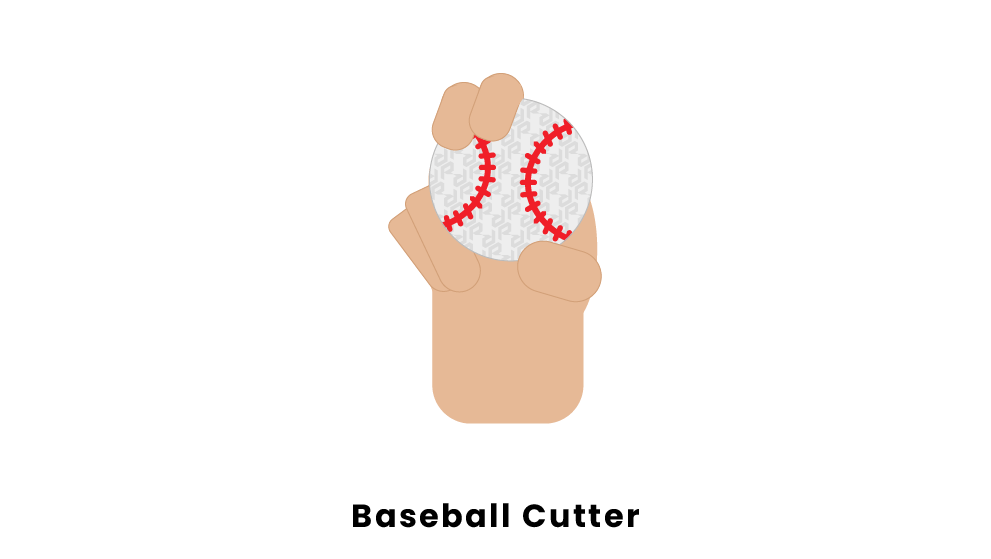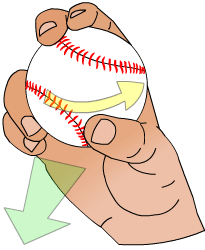Are you a pitcher looking to add a new weapon to your repertoire? The cutter pitch might just be what you need. In this comprehensive guide, we will explore the ins and outs of the cutter pitch, providing you with the knowledge and techniques to master this powerful and versatile pitch. Whether you’re a beginner or an experienced pitcher, this guide will help you unlock the full potential of the cutter pitch and elevate your game to the next level.
What is a Cutter Pitch?

The cutter pitch, also known as a cut-fastball or slutter, is a pitch that combines the speed of a fastball with the late break of a slider. It is designed to move horizontally towards the pitcher’s glove side, making it a challenging pitch for hitters to square up. The cutter pitch is thrown with a grip similar to a four-seam fastball, but with slight variations in finger placement and pressure to create the desired spin and movement.
The Grip: Perfecting Your Cutter Technique

The key to a successful cutter pitch lies in the grip. While there are multiple grip variations used by pitchers, the most common grip involves placing the index and middle fingers close together on top of the ball, slightly off-center from the seams. The thumb is positioned underneath the ball for control, while the ring finger provides additional stability. Finding the grip that feels comfortable and natural to you is essential for consistent execution of the pitch.
To throw a cutter pitch, you want to think of it as a fastball with a downward pulling motion. As you release the ball, focus on pulling down on the seams with your index and middle fingers, creating the desired spin and cutting action. This pulling motion, combined with the unique grip, will generate the necessary movement and deception that makes the cutter pitch so effective.
The Movement: Unlocking the Secrets of the Cutter
The cutter pitch is known for its sharp, horizontal movement towards the pitcher’s glove side. This movement is achieved through a combination of backspin, gyro spin, and slight sidespin. The backspin creates the illusion of a fastball, while the gyro spin and sidespin contribute to the cutting action. The precise amount of spin and the angle of release will determine the amount of movement and break on the pitch.
When thrown correctly, the cutter pitch can be a platoon-neutralizer, equally effective against both right-handed and left-handed hitters. The movement and late break of the pitch make it difficult for hitters to make solid contact, often resulting in weakly hit ground balls or broken bats. By mastering the movement of the cutter pitch, you can keep hitters off balance and gain a significant advantage on the mound.
The Art of Sequencing: Using the Cutter in Your Pitching Repertoire

To maximize the effectiveness of the cutter pitch, it is important to understand its role in your overall pitching repertoire. The cutter can be used in various situations, depending on your pitching style and the specific needs of the game. Some pitchers rely on the cutter as their primary fastball, using it to generate weak contact and induce ground balls. Others use it as a secondary pitch, using it to complement their fastball and set up their breaking pitches.
One effective strategy is to use the cutter as a complement to your fastball. By throwing a combination of fastballs and cutters, you can keep hitters off balance and disrupt their timing. The late movement and cutting action of the cutter will often cause hitters to make weak contact or swing and miss. Another approach is to use the cutter to set up your breaking pitches.
By establishing the cutter early in the count, you can then use your breaking pitches to catch hitters off guard and generate strikeouts.
The Rise of the Cutter: Why Pitchers Are Embracing This Pitch
In recent years, there has been a significant increase in the usage of the cutter pitch across Major League Baseball. Pitchers like Corbin Burnes, Shohei Ohtani, and Shane Bieber have added the cutter to their arsenal, reaping the benefits of its effectiveness. The versatility and unique movement of the cutter make it a valuable pitch for any pitcher looking to gain an edge on the mound.
One reason for the rise in popularity of the cutter is its versatility. With a simple grip adjustment, pitchers can tailor the pitch to their liking, whether they prefer a shorter sliding cutter or a firmer, sharper cutter. This versatility allows pitchers to adapt the pitch to their individual style and preferences, making it a valuable tool in their pitching arsenal.
Furthermore, the cutter pitch offers a platoon-neutralizing effect, making it equally effective against both right-handed and left-handed hitters. The horizontal movement of the pitch, combined with its late break, makes it difficult for hitters to square up the ball and make solid contact. This versatility and effectiveness against hitters from both sides of the plate have contributed to the growing popularity of the cutter pitch.
Mastering the Cutter: Tips and Techniques

To become a master of the cutter pitch, it is important to focus on refining your technique and developing a deep understanding of the pitch.
Here are some tips and techniques to help you on your journey:
- Perfect Your Grip: Experiment with different grip variations to find the one that feels most comfortable and allows you to generate the desired movement and cutting action.
- Focus on Finger Pressure: Pay attention to the pressure applied by your middle finger to create the necessary spin and movement on the pitch.
- Work on Arm Angle: Maintain a consistent arm angle to ensure proper release and maximize the effectiveness of the cutter pitch.
- Develop a Smooth Wrist Snap: Practice a fluid and consistent wrist snap upon release to generate the desired spin and cutting action.
- Incorporate the Cutter into Your Pitch Sequencing: Experiment with different pitch sequences to effectively use the cutter as a complement to your other pitches and keep hitters off balance.
- Embrace Repetition and Practice: Like any pitch, mastering the cutter requires repetition and practice. Focus on refining your technique and consistently executing the pitch to develop command and control.
By incorporating these tips and techniques into your training routine, you can take your cutter pitch to the next level and become a dominant force on the mound.
The Evolution of the Cutter: Looking Towards the Future
As the game of baseball continues to evolve, so does the cutter pitch. Pitchers are constantly experimenting with new grips, techniques, and strategies to maximize the effectiveness of the pitch. With advances in technology and a deeper understanding of pitch movement, we can expect to see even greater innovation and refinement of the cutter pitch in the future.
Aspiring pitchers should embrace the opportunity to learn and master the cutter pitch, as it can provide a significant advantage on the mound. By developing a deep understanding of the pitch and incorporating it into their pitching repertoire, pitchers can elevate their game and become a force to be reckoned with.








